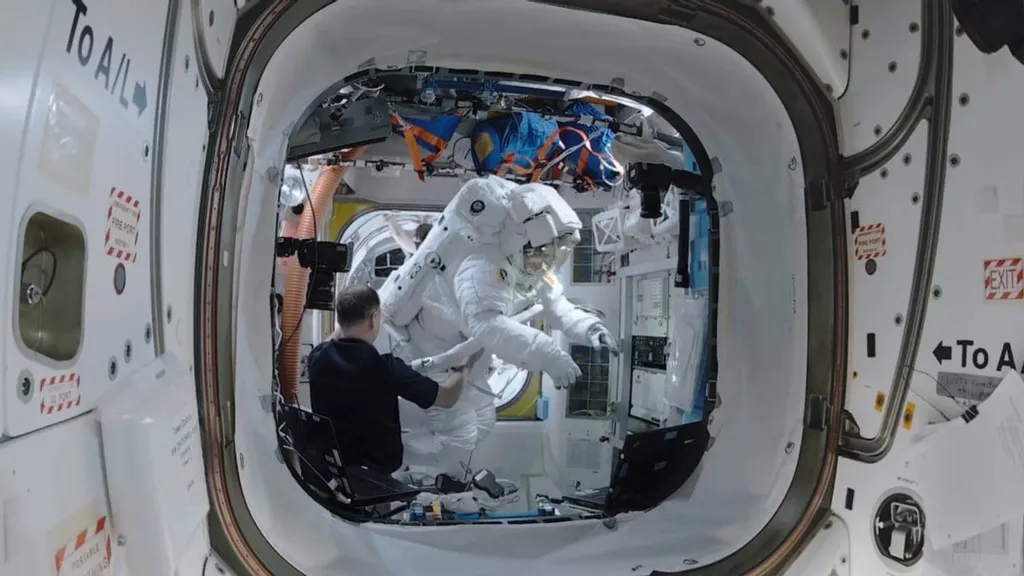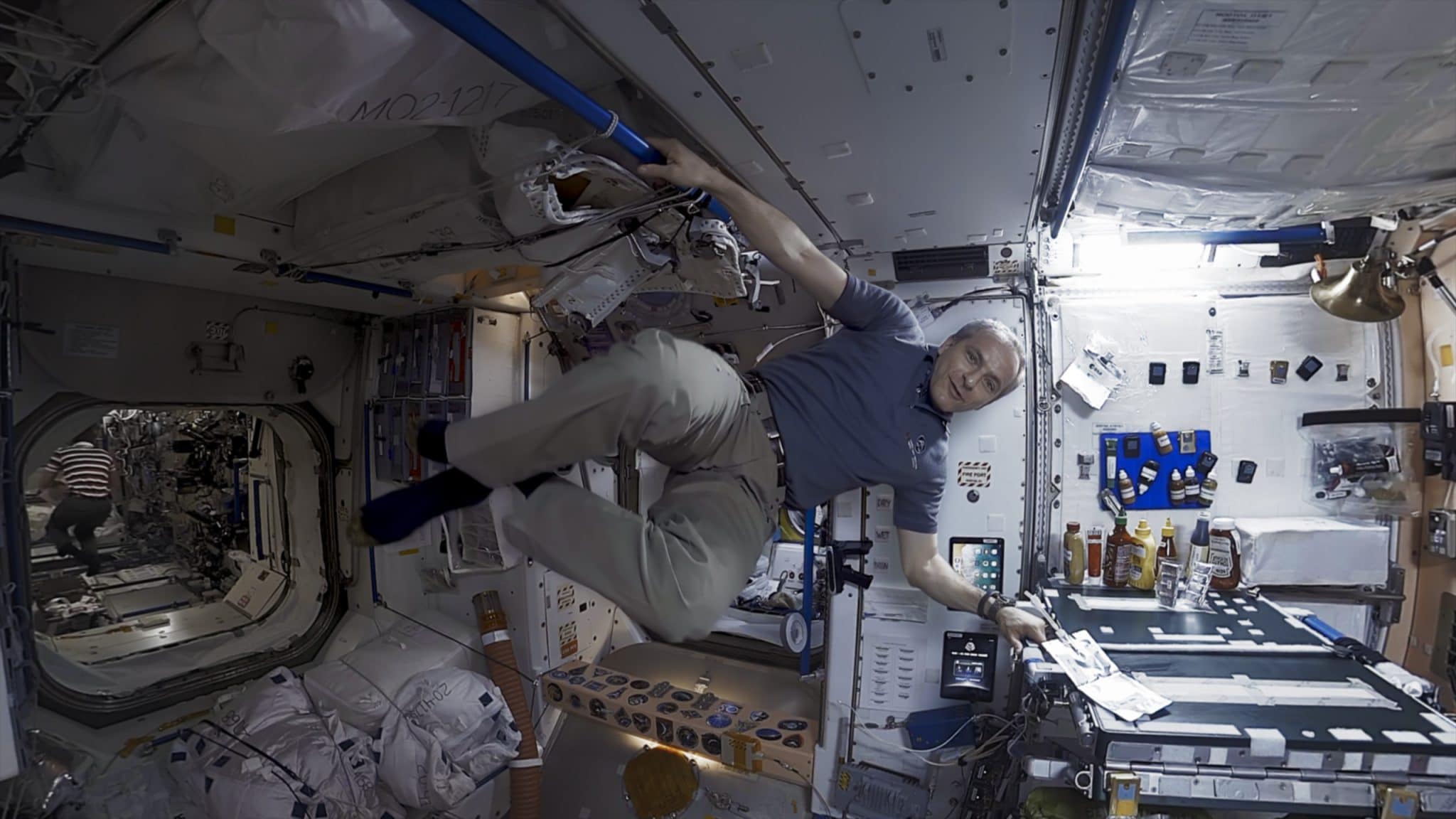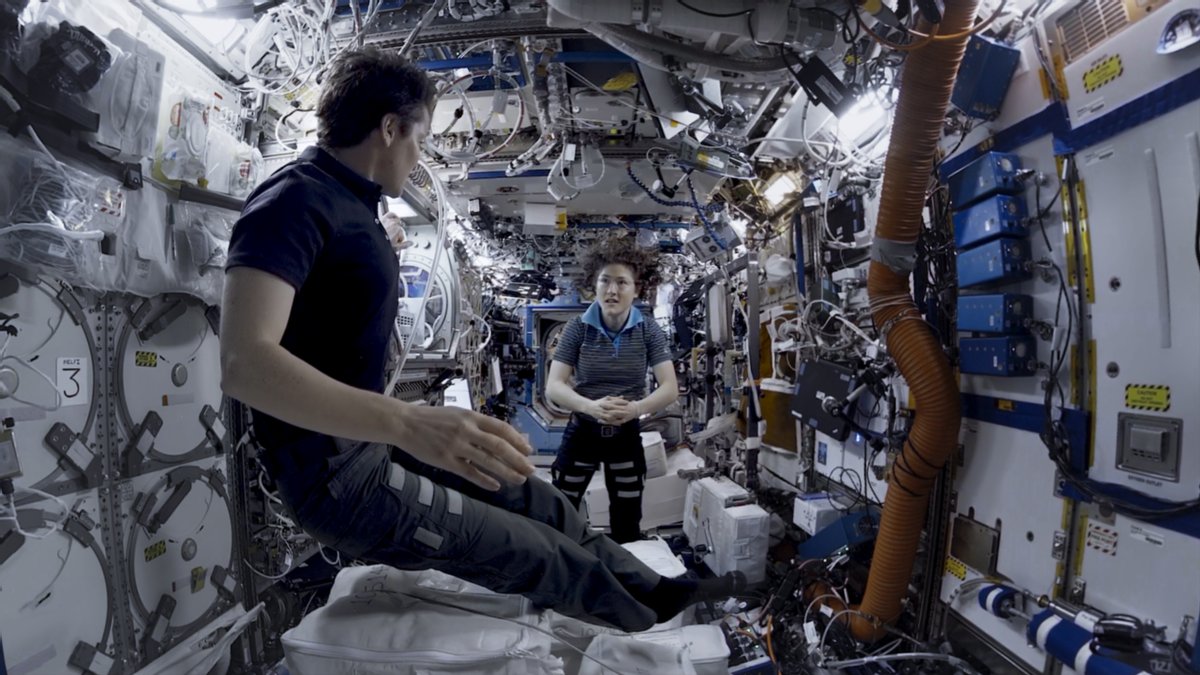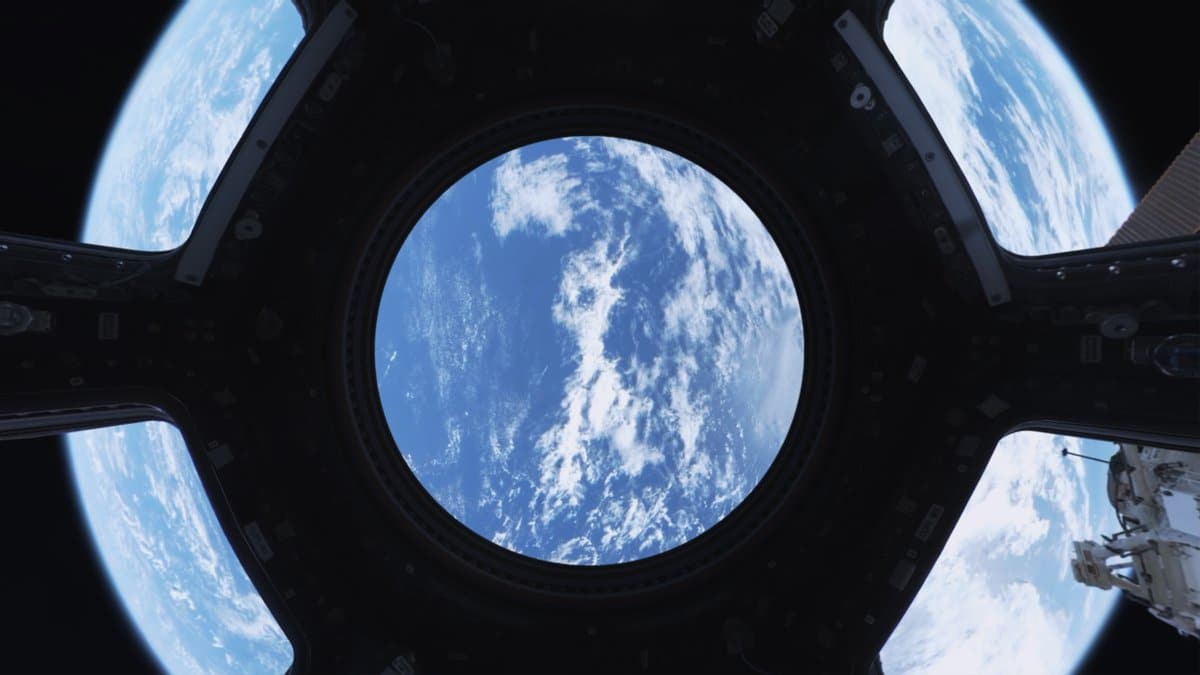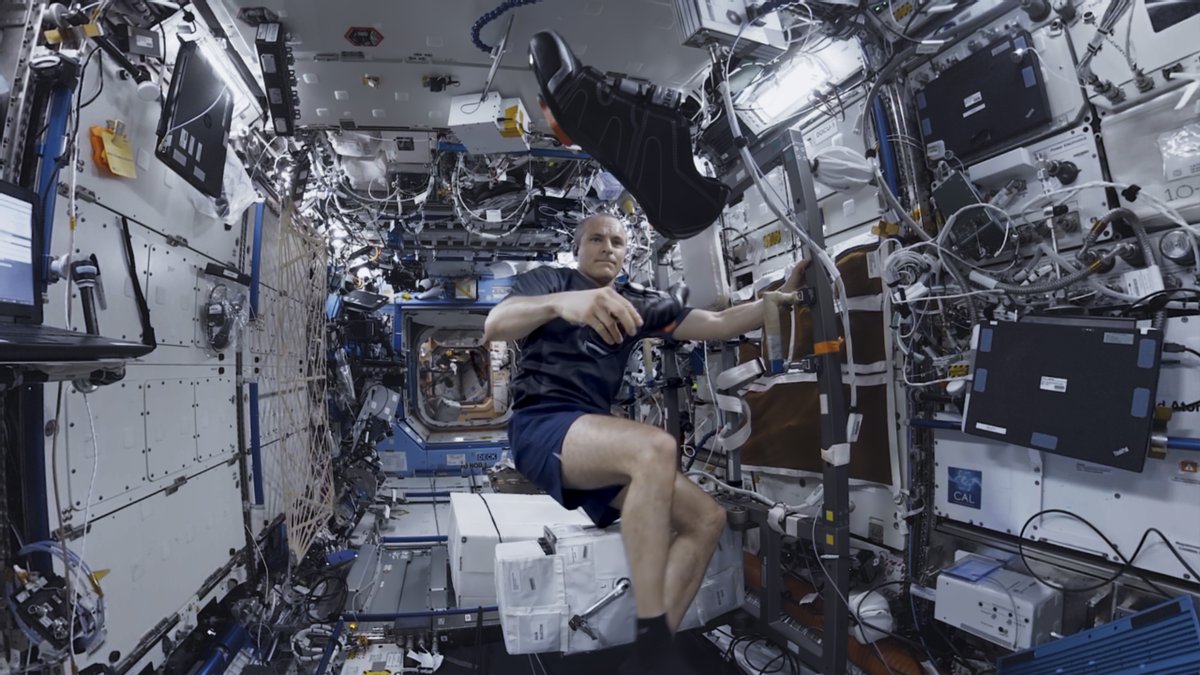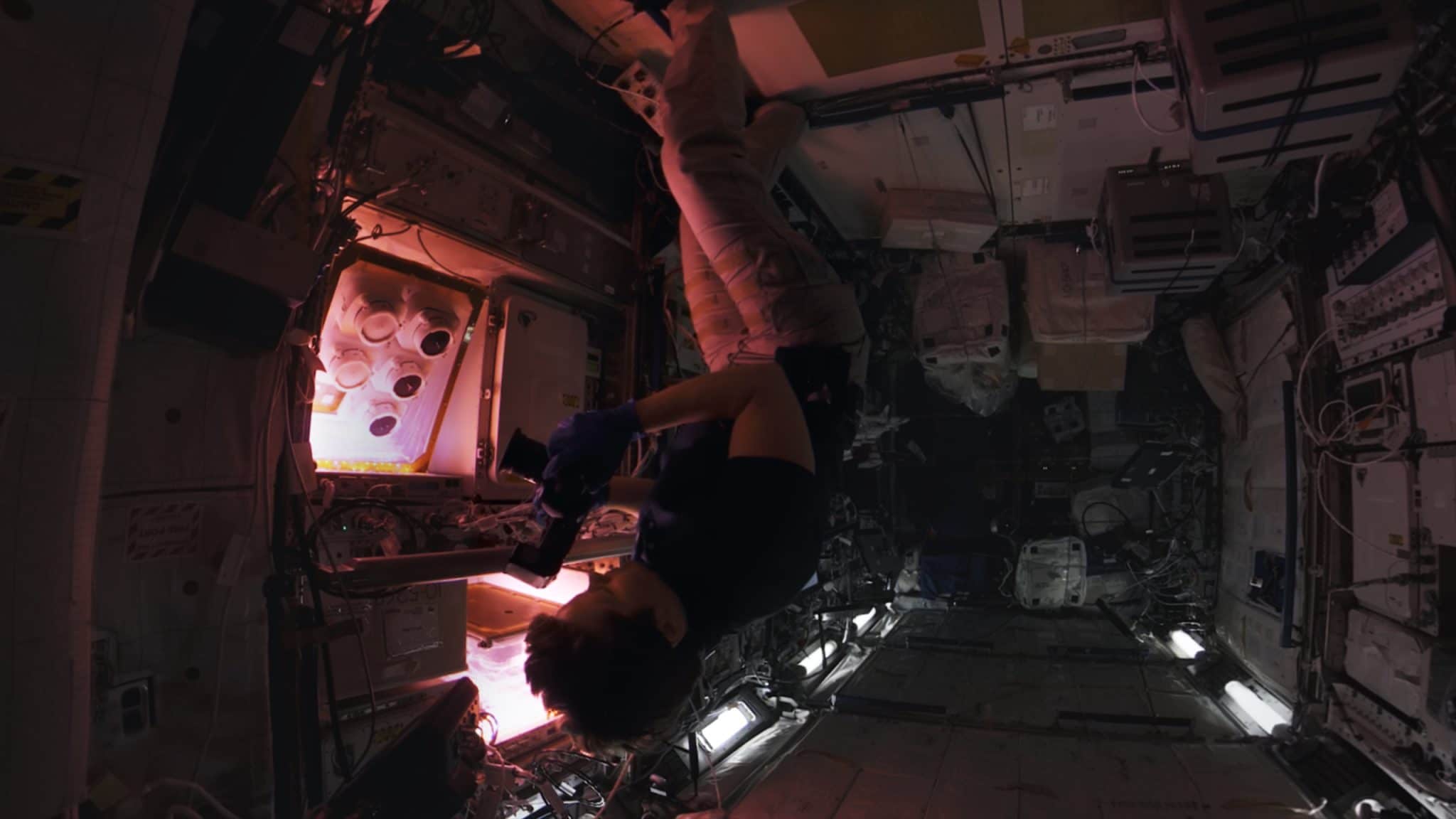Felix & Paul Studios and TIME Studios are behind one the largest productions of any type ever filmed in space. And, while the VR version of episode one of Space Explorers: The ISS Experience was recently released, they currently have multiple VR cameras in space capturing content both in and outside of the International Space Station, including the arrival of the first commercial SpaceX crew.
Regardless of your plans for space travel in the near future, this first of four episodes is your opportunity to spend virtual time in microgravity, amid 16 daily sunrises and sunsets, with astronauts Anne McClain, David Saint-Jacques, Christina Koch and Nick Hague. “It’s about humanity’s present and future among the stars” explains Felix & Paul Studios Co-Founder, Félix Lajeunesse. “We’re transporting audiences to space. We’re giving audiences the opportunity to feel like they’re living with the astronauts… with the capacity to watch planet earth from space and get a unique perspective of our world.” That perspective, Canadian astronaut David Saint-Jacque shares, spans environmental to geo-political issues. “It makes you fall in love with our planet, and makes you want to go beyond our difference and focus on all that we have in common with our fellow humans.”
For me, this first step into Space Explorers: The ISS Experience is both awe-inspiring and an essential reminder for the immersive storytelling industry that there is still a large void on store platforms for experiences that allow us to visit real places and people. This purely real footage made me feel even more connected with our earth, even while I was inside a virtual visit in a space station over 400 kilometers from my living room. Co-Founders Félix Lajeunesse and Paul Raphaël discussed their studio’s journey into space with me, along with insights that can inspire other live action cinematic immersive experiences.
Create a VR Master to Reach the Largest Audiences
While Space Explorers: The ISS Experience is filmed in VR, audiences will be able to witness the episode stories on Oculus Quests, Oculus Rifts as well as on mobile via select 5G network providers, big screens, dome screens, planetariums and even a largescale travelling exhibition. The content may vary between some of these platforms, based on what is best for their intended audiences. But they all leverage the same source capture, leading to the original footage being best described as the virtual reality master. And this virtual reality master is high resolution, as the in-space capture resulted in specs equivalent to “about 8K per eye and 30 frames per second” explains Lajeunesse.
Raphaël highlights the benefit of being able to direct for all forms of this content in post-production since the content was captured in VR. This was especially important since there was nobody from the studio that was able to direct alongside the astronauts in space. The astronauts became the whole film crew in space, and creative collaborators, all between their ongoing expedition duties. Saint-Jacque was the first astronaut to take the VR camera out of its box when it arrived in space. “In terms of the setup” he explained “we were provided with very detailed instructions for camera location and hardware [and] software setup. A support team on the ground was able to see a preview of the scene before filming started, and could advise on arrangement and lighting.”
Customize the Best Possible Camera
The largest production ever filmed in space was captured using a customized camera that has helped to make Felix & Paul Studios the only media studio implementation partner of the International Space Station. To get this VR camera to space in time for the production to capture the intended moments in space history, it was not as simple as sending one of the studio’s renowned cameras up. This first episode was captured using a modified Z CAM V1 Pro, developed in collaboration with the Z CAM team and Nanoracks. Object weight and size are just some of the constraints of camera space travel, so the team modifications addressed everything from thermal management to its sizing to get its space certification. Its modification also allowed for an even higher resolution capture, and the studio’s entire production process and software that is used on their in-house cameras was able to be integrated into this modified camera.
This is no longer the only VR camera that Felix & Paul Studios has in space, with production of this series planned to continue through to January 2021. And, from a higher-level standpoint, the next journey for their VR cameras may be deep space exploration. Raphaël said they “are also looking at the moon, and mars.”
Emotional Engagement with Real Experiences
This series is designed to take millions of people to a place that “so few human beings have been able to experience” explains Raphaël.
Lajeunesse notes that “we are trained to experience reality through our senses…but you know if it’s not true. In cinematic virtual reality, with real human beings inside a real environment… maybe you’re not able to start walking around and reaching things. But your mind knows that this is a reality. It creates a different type of emotional engagement.”
This is not to say that that real-looking experiences cannot create emotional engagement. But it may be a different emotional experience when you know for sure that every single detail happened in reality in the moment you are standing in. Visitors truly witness history in that way.
There was a lot of support to create 360 content a few years ago, but the focus has largely shifted to social and interactive experiences and games. “The real world has a place in virtual reality” states Raphaël.
Use Interactivity with Real Footage Wisely
When immersive stories are not entirely real captures, interactivity can help visitors feel physically present in the story. But Raphaël explains, in the case documenting the journey of Space Explorers: The ISS Experience, interactivity was not integrated since it is “all about you experiencing something that is real.” The content captured were real moments that happened, and nothing that a virtual visitor could do would change the course of the true narrative. There are no breaks or “lyrical moments” as he described the studio integrated into the award-winning documentary Travelling While Black, which allowed for some “subtle gaze-triggered events.” What they are experimenting with right now is how they can achieve “six degrees of freedom remotely,” to allow for virtual visitors to move around their space as the events unfold above the earth.
Episodes 2, 3 and 4 of Space Explorers: The ISS Experience are expected to release Spring 2021, Summer 2021 and Fall 2021 respectively. They follow the chronological evolution of the real-life space expeditions, with a specific theme explored in each episode.
Laura Mingail is an award-winning marketer, strategist and thought-leader in the entertainment space. She founded Archetypes & Effects to provide organizations in storytelling industries with impactful strategy, marketing and business development support. She is also a contributing author and media commentator focused on innovative forms of storytelling and technologies.

